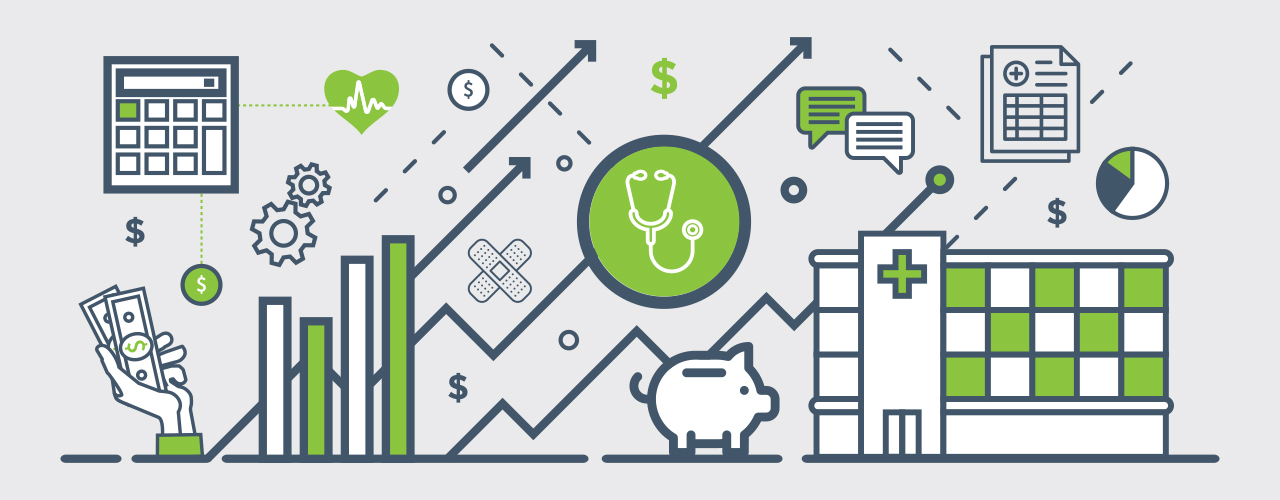Pricing strategy “thought starters”, part two: primary care
Pricing primary care is about helping customers feel the value
Consumers are shouldering ever more of the burden of healthcare costs. As a result, they’re evaluating providers with an increasing sensitivity to how much value they get for their dollar. For provider organizations to survive, they’ll need to start thinking about pricing strategy. This is the second of our three-part blog series on the topic, in which we’ll cover ideas for pricing strategies for elective surgery, primary care, and urgent care. We’ve also covered the reasons why pricing strategy is so important in our ebook, Mindset Reset: How the cost of healthcare is your biggest brand opportunity.
Let’s take a look at our second care model, primary care.
What’s unique about primary care?
As the country tries to reduce the cost of care, primary care is seen as the solution for a good sized chunk of costs. Comparatively inexpensive services like well visits are seen as a key step towards wellness which, in turn, keeps people out of more expensive services like inpatient or emergency care.
But many Americans don’t have a relationship with a primary care provider. Fierce Healthcare has reported that 28% of American men don’t have a personal doctor or healthcare provider. The numbers are lower for women (17%), but drastically higher for every racial minority.
This discrepancy indicates an area where more attractive pricing strategies could lead to larger system-wide savings.
Pricing strategies to consider
Subscriptions
Imagine how powerful it would be to offer patients unlimited sick visits within your health system for a monthly recurring fee. Call it crazy, but there’s rising enthusiasm for this model. Netflix may have started it, but Amazon is bringing it to the world of generalized retail. Even smaller companies like Harry’s razors are showing that you don’t have to be an industry giant to leverage a subscription business model.
Precedents exist in healthcare, too. Take Capsule, a digital pharmacy that promises “prescription delivery, smart refills, and love” to people in the New York City area. Or eHealth, who’s promoting 24/7 doctor support through their telemedicine platform for $13.50 / month. Or one of our rural health system clients, that offers a yearly subscription to their Air Ambulance helicopter service.
Competitive, predictable pricing on common services
Confusion with bills is one of the chief complaints people have about interacting with the health care system. Bills, themselves, are confusing, even before the snail-mail-trail of EOBs and unclear notices from providers enter the mix.
Think of the splash you could make if things like tests or imaging were available for a consistently low, predictable price. That’s a pricing strategy with marketing legs, and one that many of your patients would take advantage of.
Service packs
Not to be too mechanical, but the human body is, in some ways, a lot like a car. It requires maintenance, and you can count on it to break. You just don’t know when, or what will be wrong with it. That, along with the fact that many insurance plans don’t cover sick visits, makes it hard to plan for the financial impact of ‘repairs’.
A ‘service pack’ of sorts could make these frustrating facts of life a bit more predictable. Consider something like a six pack of sick visits for one yearly flat rate. You might also consider discounting the price of a pack to make it more attractive for patients.
What’s next
These ideas are just a few thought-starters to help providers think in new ways about pricing their services in a way that’s attractive to patients. For more ideas to help your organization survive as the cost of care grows, check out our ebook Mindset Reset: How the cost of healthcare is your biggest brand opportunity, or book some time to talk to us here.

